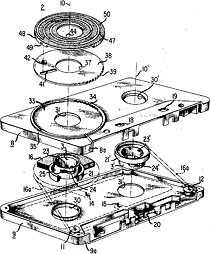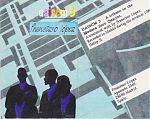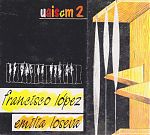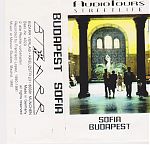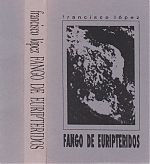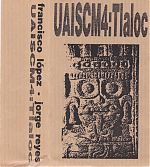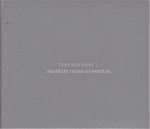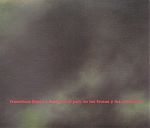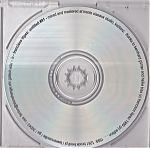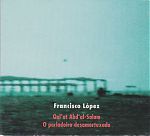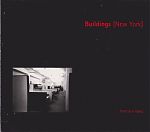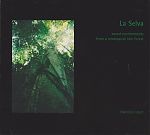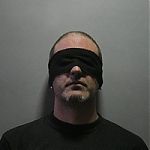Francisco Lopez
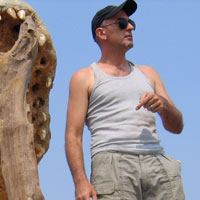 I first heard Francisco’s music when he started sending material from his apartment in Madrid for my radio show sometime in the late 1980’s. At that time he was working with a sampler, keyboard , some various electronic sounds and was issuing field recordings of various cities around the world. Very soon after that his music became very austere, to the point of almost disappearing into silence. In fact, silence became a large part of Lopez oeuvre over the next several years. Well, maybe not exactly silence as his sounds would grow almost imperceptibly until they were a large roar of white and pink noise. And then just stop…dead. To begin again at the very edge of awareness.
I first heard Francisco’s music when he started sending material from his apartment in Madrid for my radio show sometime in the late 1980’s. At that time he was working with a sampler, keyboard , some various electronic sounds and was issuing field recordings of various cities around the world. Very soon after that his music became very austere, to the point of almost disappearing into silence. In fact, silence became a large part of Lopez oeuvre over the next several years. Well, maybe not exactly silence as his sounds would grow almost imperceptibly until they were a large roar of white and pink noise. And then just stop…dead. To begin again at the very edge of awareness.
When I received his “Warsaw Restaurant” CD the sound was so invisible I thought it might be a conceptual joke, an art statement about the presence of nothing and telling us to hear the world around us. There seemed to be nothing at all on this CD. It puzzled me but I wrote it off as something I didn’t understand and put the CD aside and continued to enjoy his other material. But something gnawed at me, something wasn’t right. This went on for awhile, at least a couple of years until one day I thought “I should try some headphones on this one”. And when I did a huge, subterranean world that was indescribable in words opened inside of me. I had missed it and when I found it I was stunned. How many other aspects of his ( and others) art had I overlooked?
Francisco Lopez has produced a very large body of work at this point in many mediums, has done countless live performances, and traveled the world giving seminars and making recordings. Personally I have always enjoyed his communications and , on the rare , occasion, his company. He is yet another example of someone I do not know very well but whom I would call a friend. And I feel enriched by that.
How and when did you first hear about the tape trading/ home recording network?
I believe it was around 1982 when I first heard about the home recording network through the Canadian CLEM printed magazine (Contact List of Electronic Music).
Who were some of your first contacts?
Esplendor Geométrico, Hunting Lodge, Maurizio Bianchi, SPK, Whitehouse, Comando Bruno…
Was there music in your house as a child? What kind? Did it influence you at all?
None at all. So I’m not really sure where my interest for music/sound comes from, as I had it as far as I can remember.
Did you play any instruments as a kid?
We got some basic music training at elementary school with flute as the only choice of instrument. I became number one in the school but I completely blew my fame and position in a tragic christmas school show where I couldn’t play my well-rehearsed songs because I couldn’t stop laughing while on stage (I think triggered by a stupid joke by one of my classmates right before going on stage), and I was quickly kicked out (in big shame) to give way to the next performer.
Were you ever in bands, rock or otherwise?
I played drums for a few years (laughing really doesn’t matter that much if you’re a drummer) in a few new wave/punk bands.
I’ve heard a rumor that you disregard or disown your early tapes, the ones that feature keyboards or ensoniq music. Is this true ( and if so, why?).
Oh, these are not my early tapes. Before I got a sampler (first an SK1 and then Ensoniq) to fool around for a couple of years, I had been recording and manipulating tapes (cassettes) for a number of years. Although those samplers where useful and interesting for a number of things, I always felt the keyboard was extremely limiting and somehow tended to direct too much the way you structure & mix sounds, so that didn’t last too long.
Talk about your own musical evolution.How do you think it transformed into your “signature” sound?
Not sure I have a “signature” sound. There are a number of structural and aesthetic features that I feel very strong about (I guess like any other composer): crescendos, very sharp sudden changes, extreme dynamics, a profound interest in both subtle ghostly sonic presences and apocalyptic complexity… I believe that a lot of these features come from the experience of “real sounds” (i.e., doing field recordings and being immersed in real sound environments of very diverse nature).
What have been some of your musical/art influences ?
As usual for most of us, too many to pick a few… Nothing standing out with clear predominance. Even a list of favourite comosers / sound artists would be a very long one…
Do you see yourself as a perfectionist? Or , do you like to be surprised at the results you achieve in your projects?
Definitely both. I aways get surprised by what comes out of a new sonic creation, since my work always derives from the sound themselves, typically in a long process of transformation/mutation through many generations.So I never know what’s going to come out, and how, in that process of unfolding virtual sonic reality our of the substance of so-called “reality”. But then, when already inside that world of sound I definitely see myself as a man of detail and hidden complexity (which is, of course, not“perfectionism”).
What about collaborating with other artists. Is this easy for you? Do you listen intently and repeatedly to the tracks you receive for collaboration or would you rather not know the material well?
It really depends on the project. Always relying on the sounds themselves, the need for more or less detailed listening depends on the sound materials. With the way I normally work, the stage of development of sonic materials out of reshaping, transformation, etc. is the one that I find can easily be shared. Once you enter into the more compositional/structuring work things are much more complicated for a truly shared work. Somehow I always think that this kind of work is closer to, say, painting (which is something rarely done in collaboration) than music-making in the traditional way (instruments playing together, etc.).
Talk about the Experimental Sound Archive you established in Murcia, Spain in 2010. What is the goal?
I’m not a collector, but have accumulated a large aerchive of music from constant exchange with artists over some 30 years (which obviously includes a large number of cassette releases). So I decided all of this should be of public access (instead of sitting in boxes or nicely arranged in my living-room). In Murcia (a city in southern Spain) I found the ideal place and team of people for the project at the Centro Cultural Puertas de Castilla. They understood from the beginning that my idea of the sound archive was more about the present and the future than the past. The main aim is to promote new creation and generate all kinds of activities around the resources of the archive. We have several lines of work, including performances, sound installations, workshops, artists in residence, researchers in residence, some editions, radio shows, etc. All the information is on the archive’s website www.sonm.es
You have traveled far and wide to research and get material for many of your works.This must not be easy or comfortable at times. Can you talk a little about what you have learned about your art ( and yourself) from these experiences?
As I write this I’m in one of those not so easy moments, as I’m at the Panama City airport waiting for a flight to Bogota (Colombia), after a long flight from Amsterdam, etc. Of course, for those of us who enjoy travelling, it’s all worth the pain. I suppose I got used to it as a price to pay for the immense rewards of exploring places and cultures, meeting people, etc. etc. It’s difficult to summarize all this learning. I’m not sure what to highlight or how to synthesize all of it. I guess one important consequence is a enlarged perception of diversity and richness in the world, both natural and human. But at the same time there are other noticeable processes, like the aparent shrinking of the world and the loss of many beliefs…
Besides many, many field recordings you have also worked with material from artists like The Modern Jazz Quartet, heavy metal rock, etc. Do you consider this material a “field recording” in its own way, and treat it as
such?
I wouldn’t say that. Musical material as a starting point has very specific features that are clearly different from those of “real sound environments”. I have the impression that this also had a clear influence in the way I’ve worked with these types of materials. As an extreme example, I’m currently working on a new piece with the full soundstracks (including dialogues) of old cartoons: it’s leading me through quite a different new direction…
Have you ever been criticized by purist, academic “field recording” artists because you dare manipulate/ edit the sound of nature, or buildings? How do you respond to this?
Of course: there are dogmatists in any field. I just don’t have the time to care much about this. If you don’t believe in reincarnation, you better get to work in what is of deep interest for you… ;-)
Most, but not all, of your projects are untitled or simply numbered. I have always assumed that this was in keeping with your non representational approach to your music. In other words, “take it for what it is”, do not try to imagine how it was made. Am I correct?
Yep. This is a much more complicated issue than what it seems on first sight (there are always references, some think this is a “conceptual” move, “compositional” listening is always there for those interested, etc. etc.), but in essence that’s the idea. And, from experience, I believe it works more or less fine for most listeners.
In your CD “Warsaw Restaurant” there is almost no audible sounds from my speakers. For years I thought it was supposed to be just empty. Then, one day I put on headphones and an entire subterranean world opened up. A cavernous, huge and unexpected world. Do people comment at all on the huge dynamics in your work, the silence, etc.?
Of course. I like to work in a territory that reveals the paramount relevance of the playback systems (different speakers, headphones, etc.) for the re-physycalization of sound. Trying to emphasize that there’s no sound in a recording, etc… In this sense, the question of analog vs digital, or even the entire prototyipical social history of recording technology (phonograph, tape, digital…), is sort of irrelevant compared to a possible (but as yet unrealized) history and analysis of the speaker in all its manifestations. If I had the time, I’d do it myself. But then again, I don’t believe in reincarnation…
Do you want to elicit an emotional response from people?
I guess so; for sure a very un-specific one. But regardless of my personal take on this, listeners do that naturally, and freely, if you give them the open territory for it.
Has anyone ever returned a CD because they thought it was defective because of so much silence?
Yes, it has happened a few times with different releases in several record labels. But I’m not really surprised by this considering the average listening experience in terms of both dynamics and attention span…
Do you still perform the concerts with the audience blindfolded?How did you come up with this idea?
Yes. In my experience (feedback from many different audiences) it’s still the best way to attain both enhanced listening and voluntary committment to the listening experience in a very dedicated/profound way. I started using them due to the extreme difficulty (if not impossibility) in having completely dark spaces.
When I saw you perform this at Mills College in Oakland some years ago there was nothing on stage ( and the audience was blindfolded).Have you ever worked with visual artists for stage presentation?
Occasionally, but most of the times I end up being very non-convinced about the final results…
Thank you for your time Francisco and best of luck with everything.
Listen to a radio special I did on Francisco Lopez in 2011.
